The silky shark (Carcharhinus falciformis) is a species of requiem shark found in tropical and subtropical seas around the world. They inhabit the epipelagic zone near continental shelves and deepwater reefs where they feed on bony fishes, cephalopods, and the occasional crustacean. They are known to be active and inquisitive and are considered potentially dangerous to humans but given their preferred habitat, encounters are rare.
All Carcharhinus Reviews
Sharks of the World Box Set (Colorata)
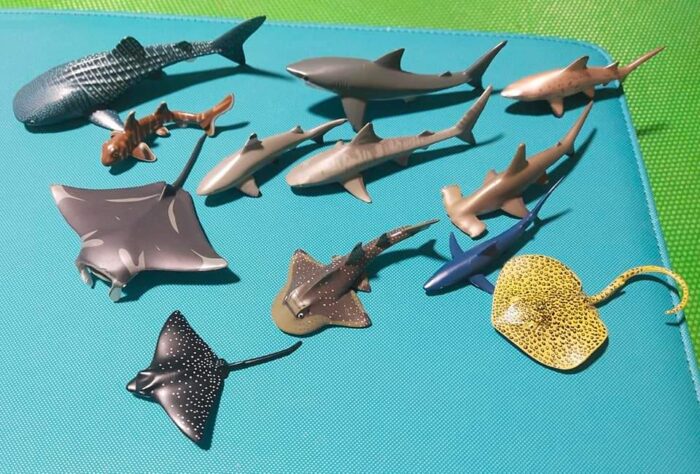
Review and images by JimoAi; edited by bmathison1972
Happy Shark Week to everyone who loves sharks! This is the time of year where TV programs go out of their way to showcase shark-based programs, most notably Discovery Channel and National Geographic. These programs help open the doors to knowledge on these animals and help the general public understand, instead of fear, these misunderstood creatures, although some programs may over sensationalize rather than give true facts.
Blacktip Reef Shark (Marine Life by Papo)
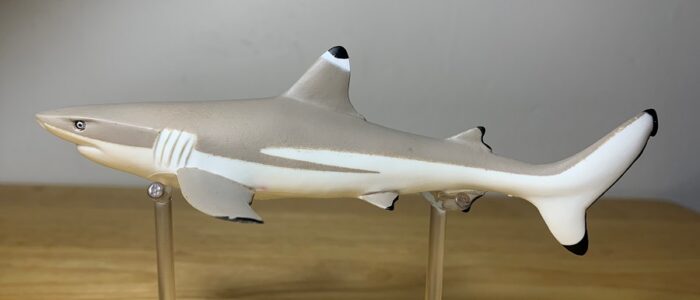
The blacktip reef shark (Carcharhinus melanopterus) is one of the most recognizable sharks, a staple in aquariums that frequents shallow coral reefs in the wild, which makes it popular among tourists and SCUBA divers. The blacktip reef shark is a generally timid species with only 11 unprovoked attacks and 21 attacks total to its name, none of them fatal.
Bull Shark (Marine Life by Papo)
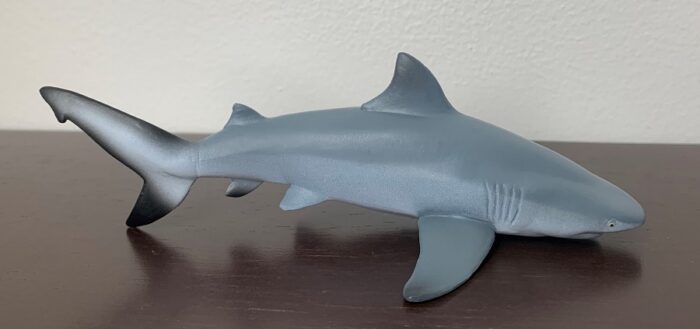
Counted among “The Big 3”, the bull shark (Carcharhinus leucas) is considered one of the most dangerous sharks in the world, right alongside the great white and tiger shark. The frequency in which this species encounters humans is due to its preference for habitat that humans also enjoy, shallow warm coastal waters, estuaries, and bays.
Sharks of the World Deluxe Box Set (Colorata)
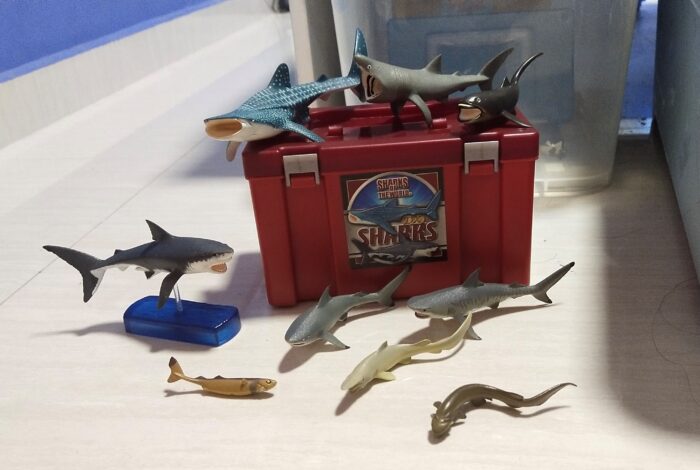
Review and images by JimoAi; edited by bmathison1972
Sharks are master hunters. They have inhabited the world’s oceans since the Silurian period and are still standing strong today, even though their population is dwindling due to human greed. They have a basic body plan of a streamlined body, having cartilage rather than bone for their skeletal structure, external gill slits on either sides of the head, and pectoral fins that are not fused to the head.
Oceanic Whitetip Shark (Wild Safari Sealife by Safari Ltd.)

Review and images by JimoAi; edited by bmathison1972
When it comes to dangerous sharks to humans, most people will always think about the great white, the tiger, or the bull shark. However, there is a runner up for the most dangerous shark that not many people have heard of, and it’s the oceanic whitetip shark (Carcharhinus longimanus).
Blacktip Shark (Wild Republic by K&M International)

Review and images by Suspsy; edited by bmathison1972
The blacktip shark (Carcharhinus limbatus), not to be confused with the blacktip reef shark (Carcharhinus melanopterus), is a requiem shark found in coastal tropical and subtropical waters worldwide. Like the overwhelming majority of sharks, it has never been rendered as a plastic toy (at least as far as I can tell), but it has been made into a plush one courtesy of Wild Republic.
Australia’s Deadliest Nature Tube (Wild Republic by K&M International)
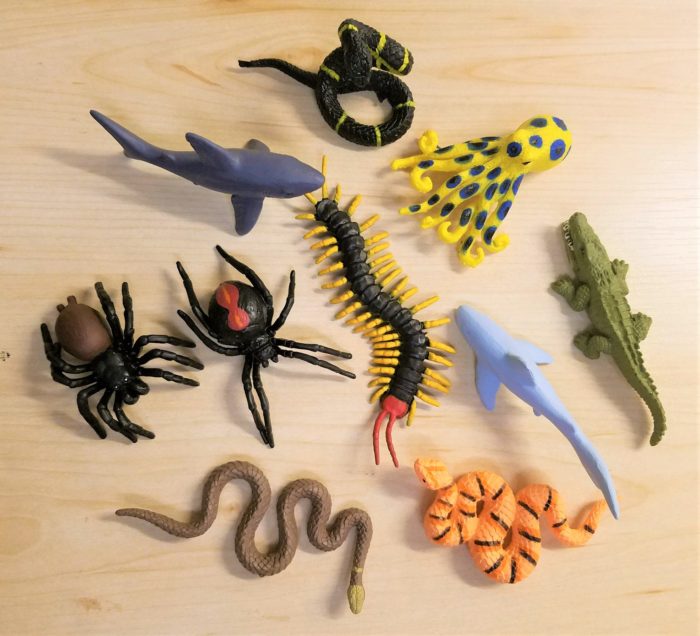
Review of the Australia’s Deadliest Nature Tube, by K&M International for the Wild Republic line. The set was released in 2018. To be honest, I bought this set specifically for the three arthropods, since I am a completist when it comes to arthropods identifiable to the species level. However, now that I am building a Synoptic Collection, I thought I could use the octopus too.
Grey Reef Shark (Wild Safari Sealife by Safari Ltd.)
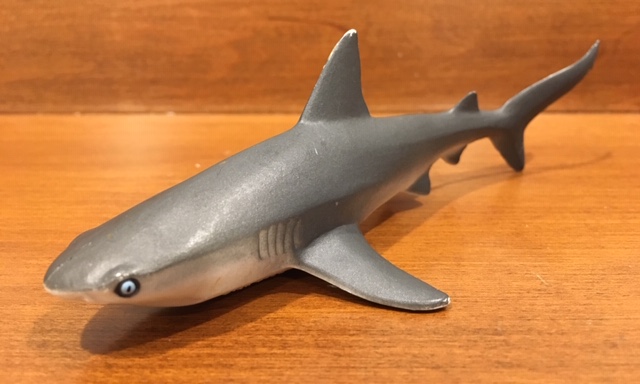
Review and photos by Suspsy; edited by bmathison1972
As its name suggests, the grey reef shark (Carcharhinus amblyrhynchos) make its home around coral reefs throughout the Indo-Pacific, where it preys upon fish, cephalopods, and crustaceans. While not a very large shark, it is highly aggressive and will drive off other sharks from its territory.




